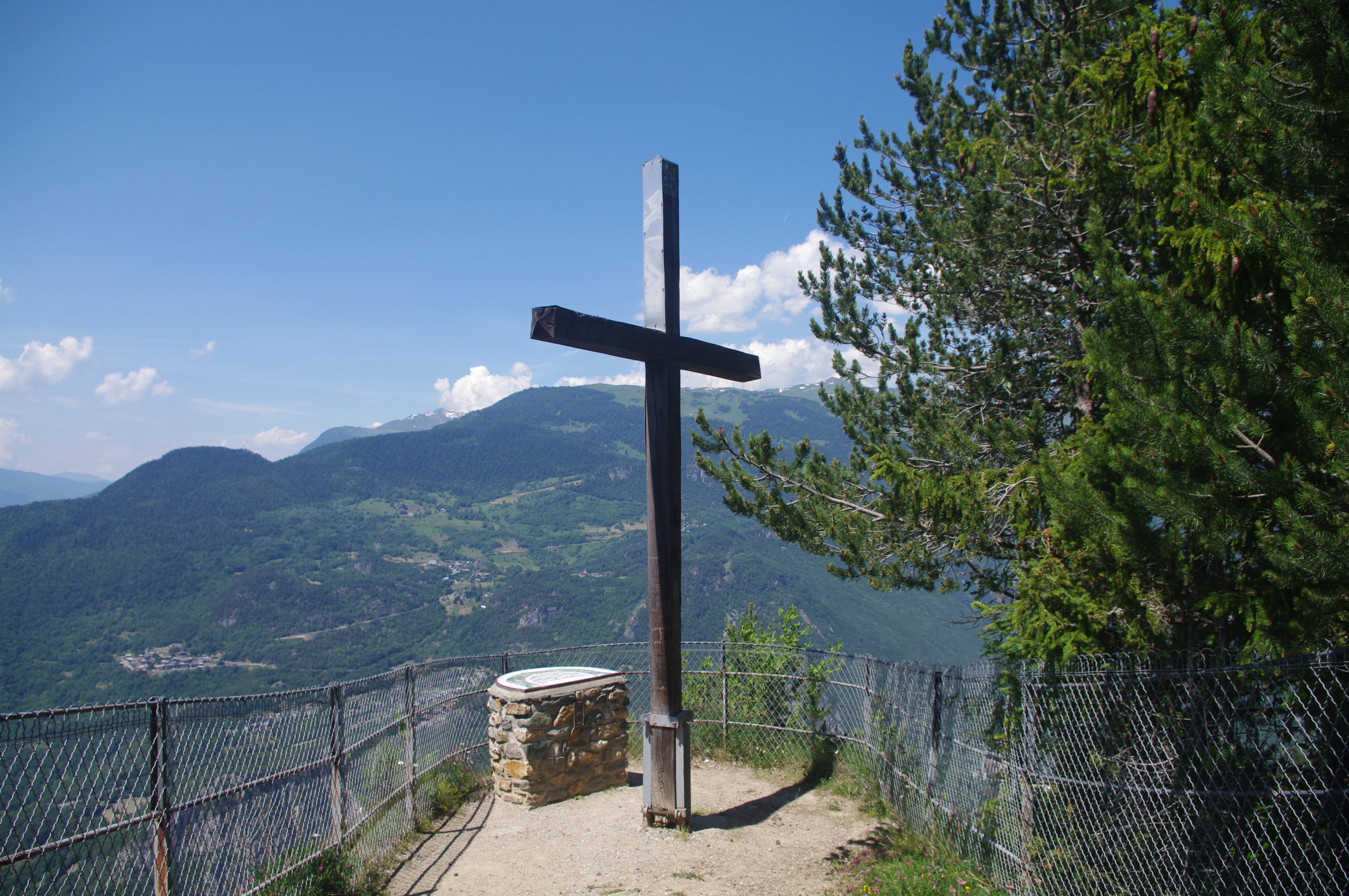
Between old stones, woodland and mountain pastures, towards La Croix de Feissons
Description
Follow the red waymarks: Croix de Feissons.
E-bike rental shops:
Génération Road Trip (Sport 2000 La Cage O Sport)
Immeuble Les Soldanelles
73350 BOZEL
+33 (4) 79 55 00 39.
- Departure : Bozel town hall, 73350 Bozel
- Arrival : Bozel town hall, 73350 Bozel
- Towns crossed : BOZEL, MONTAGNY, and FEISSONS-SUR-SALINS
Forecast
Altimetric profile
Recommandations
If in doubt, you can take an introductory lesson in how to ride an electric bike with an instructor.
If you see a herd ahead, slow down and go round it. If there is a patou, a guard dog, climb down from your bike and walk, pushing it alongside you. Avoid making any sudden or aggressive gestures towards the dog and move away from the herd slowly and calmly. The dog will only be checking that you do not pose a threat to its herd. Respect the parkland and close gates behind you after you've gone through them.
The mountain is living, please respect it by staying on the paths and tracks.
Information desks
Transport
You can then get a coach to Bozel.
Find out more at: www.transavoie.com
Have you also thought about car sharing
Access and parking
Parking :
Accessibility
- Emergency number :
- 114
10 points of interest

 Know-how
Know-howE-bike rental Génération Road Trip (Sport 2000 La Cage O Sport)
E-bike rental:
Génération Road Trip (Sport 2000 La Cage O Sport)
Immeuble Les Soldanelles
73350 BOZEL
+33 (4) 79 55 00 39
Vue sur le village de Bozel - Eynard Machet Alfred  History
HistoryBozel Village
The name of this village comes from the low Latin term Buxellus, diminutive of Bocus (wood) which became Boselus. During the French Revolution, Bozel went by the name of Fructidor. Traces of human presence in Bozel date back to 2500 BC!
Perched on the banks of Le Bonrieu stream at an altitude of 860m, on the sun-facing slopes, this village is brimming with things to see and do. There is a wealth of Baroque heritage to discover here, not least with Notre-Dame-de-Tout Pouvoir Chapel, St François-de-Sales Church and Sarrazine Tower, which is a surprising building. There is a lakeside leisure centre nearby where you can unwind and cool off on returning from your outing! And let's not forget that Bozel also lies at the foot of the sweeping ski areas of the 3 Vallées and Paradiski, as well as being the start point for a wide range of hikes.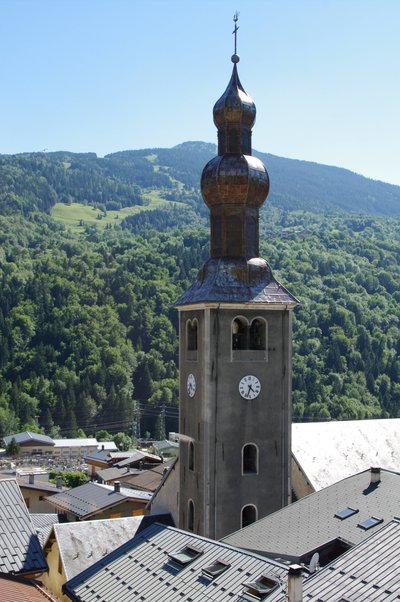
Le clocher de l'église Saint-François-de-Sales - M Pellicier  History
HistoryBaroque church of Saint-François-de-Sales
Saint-François-de-Sales Church is one of the most recognisable landmarks in Savoie, and its interior décor is heavily steeped in Baroque influences. It is graced with two bell towers: one has a spire with two onion domes, the other an onion dome crowned with a cross and weather cock atop a globe, but the bell tower, its spire as well as the interior furniture were damaged during the Revolution. Incidentally, this church was even used as a warehouse for storing the saltpetre necessary for making gunpowder until 1800. Between 1840 and 1856, various sculptors crafted new altarpieces in succession: the main altarpiece located on either side of the central scene, where the pulpit is remarkable, and the Rosary altarpiece, which is typical of the Baroque period. In light of the growing population, the building was extended in 1976 to create a new, bigger gallery.
Open all year round from 9:00 to 19:00, to visit at your leisure.
One-hour tours for individuals and groups can be organised in French, English and Italian. Find out more at: https://fondation-facim.fr/This building is included in the "Escapades Baroques des Alpes" initiative, aimed at showcasing Baroque heritage in the Alps.
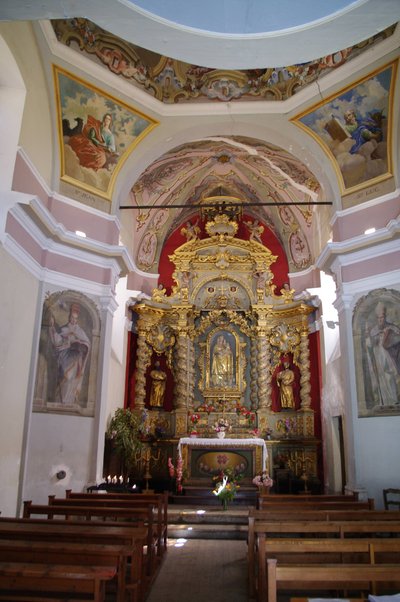
Intérieur de la chapelle Notre-Dame-de-Tout-Pouvoir - M Pellicier  Small heritage
Small heritageBaroque chapel of Notre-Dame-de-Tout-Pouvoir
The eye-catching paintings on the façade of the Baroque chapel of Notre-Dame-de-Tout-Pouvoir inspire you to step inside and see the equally exquisite interior! The chapel is laid out in a Greek cross, crowned by an octagonal dome. Between 1780 and 1850, an array of religious scenes were painted to decorate the sides of the dome, pendentives, walls and pillars. There used to be a statue in the 1754 altarpiece of the miraculous Virgin, whose veneration prompted the building of the chapel, but this was destroyed during the French Revolution and replaced by a Virgin with Child from the 19th century.
Open all year round from 9:00 to 19:00, to visit at your leisure.
45-minute tours for individuals and tours can be organised in French, English, Italian and German.
Find out more at: https://fondation-facim.fr/
This building is included in the "Escapades Baroques des Alpes" initiative, aimed at showcasing Baroque heritage in the Alps.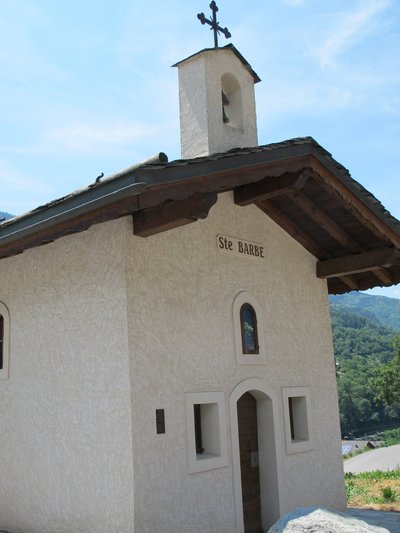
La chapelle Sainte Barbe - Nadia Mousselard  Small heritage
Small heritageSainte Barbe's Chapel
This chapel can only be viewed from the outside. That said, once a year, on the first Saturday in December, it is opened specially to celebrate Mass. The local congregation then gets together around a traditional soup prepared at night in a big cooking pot.
Le chemin des vignes - Nadia Mousselard  Viewpoint
ViewpointVine-lined track with viewpoints
Old vines abound along this south-facing track, which is surprising given the mountain setting. The Tarentaise region's warm, dry climate has helped them thrive. Low rainfall and a warm wind, the Foehn, were ideal conditions for farmers in the Bozel Valley to cultivate vines through until the 1950s.
The very low wine yields were not sold, incidentally, but consumed by the local community. In the plots of Brides and Montagny, some climbing vines are still tended to.
There's a lovely view as you pass alongside the River Doron de Bozel below.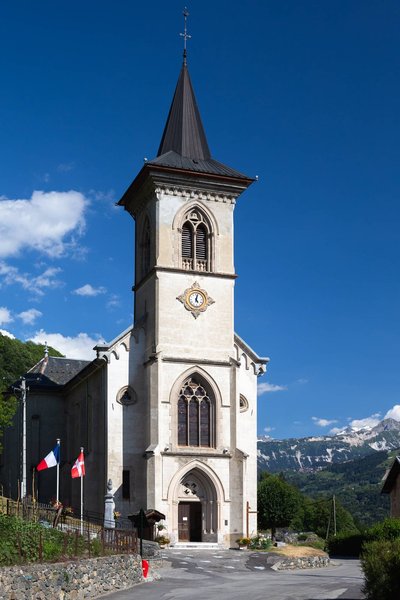
L'église néogothique Saint-Germain - Geoffrey Vabre01  History
HistoryGothic Revival Church of St Germain
Located in the village of Montagny, this church, dedicated to St Germanus, was rebuilt for the first time in the 17th century. But sinking subsoil threatened its foundations, so it was built on another site in the 19th century in a Gothic Revival style. Inside is a Historical Monument-listed organ with 23 rollers, dating back to circa 1832. In 1943, the heavy spire of the bell tower was demolished as it posed a threat to the solidity of the whole church. A new, copper-plated spire was finally erected in 2007.
Open all year round to visit at your leisure.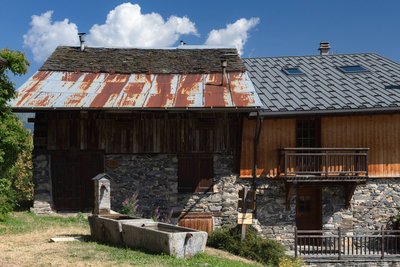
Le village de Moranche - Geoffrey Vabre  Architecture
ArchitectureTraditional architecture of Moranche
Basking on the sunny slopes of Montagny and only inhabited in summertime, this hamlet boasts quintessential traditional architecture found in villages of the highland pastures. Affording a beautiful view over the Vanoise and the 3 Vallées, it is also commonly referred to as a montagnette, i.e. a seasonal settlement above the permanent municipal villages. In times past, the villagers would take their livestock up there come spring, on their way to the mountain pasture, and stop off there again in the autumn on their way back down. Each family had a little house and barn where tomme cheese and butter were made. The animals were put out to graze together around the hamlets. Generally, the women went up with the children, while the men stayed in the village to work in the fields.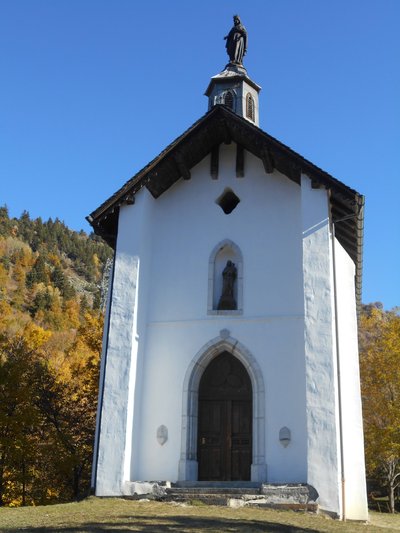
La chapelle Notre-Dame-des-Neiges - L. Lagneau  Small heritage
Small heritageNotre-Dame-des-Neiges Chapel
The first chapel was built in 1750 on La Chal plateau at La Bonne Fontaine, following the villagers' wish to express their gratitude to the Virgin Mary for having protected them from the unprecedented snowfall between February and June 1749; hence its name (Our Lady of the Snows).
But another harsh winter left the chapel, which was in any case too small and remote from the village, worse for wear, and the decision was made to rebuild it in 1889 where it now stands, closer to the villages.
In the 1920s, however, the structure was once again weakened, probably owing to detonations in the coalmine located below the chapel where operations had ramped up during World War I: from 15 August, religious services and pilgrimages had to be held outside until it was fully restored in 1970-1971. The 15 August pilgrimage still takes place to this day incidentally.
Since the chapel stands on the Le Châtelard hillock, the views over the surrounding valley alone make it well worth the trip.
The chapel can only be viewed from the outside.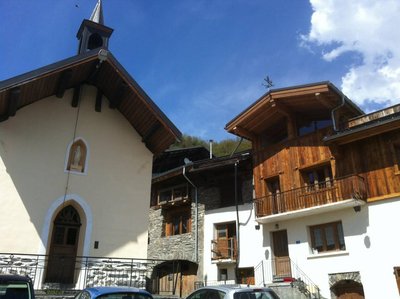
La chapelle du Villard - Nadia Mousselard  Small heritage
Small heritageLe Villard Chapel
St Roch's Chapel stands amidst the narrow lanes of Le Villard. Gothic Revival in style, it was built before the pastoral visit of 1633. It was then completely rebuilt at the turn of the 20th century. The statue of Notre Dame de Lourdes (Our Lady of Lourdes) can be seen at the front of the chapel. Every year, the village fête is celebrated on the last weekend in August.
The chapel can only be viewed from the outside.
